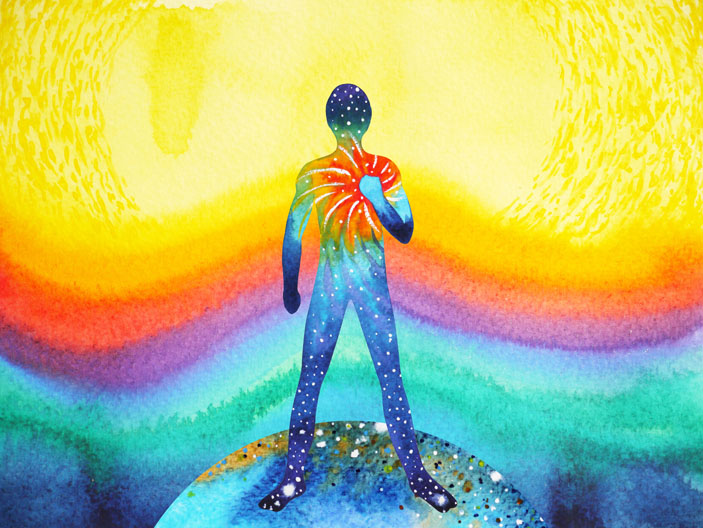RATHER than flogging the tired worker to perform better it would be worth your while to energise him into action.
The employee that shows up to work on time and stays late is not necessarily working to his maximum capability. How we apply our energy through the course of a day will help the organisation perform better, according to Tony Schwartz from US-based The Energy Project, and energy proponent Mihaly Csikszentmihalyi, it’s not so much time-management as energy-management.
Time is finite, energy can seem infinite, and in these times of multi-tasking and due-yesterday deadlines, it is energy that must be harnessed.
Schwartz observes that organisations are demanding ever-higher performance from their workforces. “People are trying to comply, but the usual method — putting in longer hours — has backfired. They’re getting exhausted, disengaged and sick.”
Take these contrasting examples. In a study they conducted at US-based Wachovia Bank, participants in an energy renewal programme produced 13% points greater year-over-year revenues from loans and 20% points in revenues from deposit than a control group did.
Conversely, if organisations do not manage energy well among their staff, it will lead to “declining levels of engagement, increasing levels of distraction, high turnover rates and soaring medical costs among employees.”
Mohammed, a technician in the airline industry here has seen his workload double since head-count was frozen. The cost to his physical and emotional health escalated. He falls sick more often, he is emotionally exhausted. His family life is in shambles, as his children hardly get to interact with him.
He is a victim of energy depletion.
 What is energy?
What is energy?
Schwartz suggests that there are four types of energy that have to be managed: Physical, Emotional, Mental and Spiritual. They postulate that time is a finite resource but energy comes from these four main wellsprings in human beings: the body, emotions, mind and spirit. It is renewable and expandable.
Physical energy: Nutrition, sleep, exercise and rest add to this. Inadequate aspects of each of these diminish our basic energy level, which will affect our ability to manage our emotions.
Emotional energy: This is derived from our ability to control our emotions and understand our personality types, regardless of external pressures. For example, extroverted people are resourced and energised by interactions while introverted individuals replenish themselves in solitude and reflection.
Mental energy: Mind research, especially by Daniel Siegel, clinical professor of psychiatry at the UCLA School of Medicine, has shown that what we think and the way we flow can build up the pre-frontal cortex, the part of the brain that helps in maturation of the person in terms of planning, prioritising, impulse control and awareness of consequences. This helps us manage our personal and social interactions.
Spiritual Energy: Most people find energy when they find meaning and purpose in what they do. This can be derived from divine, supernatural encounters.
I would venture to include a fifth dimension: Social Energy.
Connecting With People
Social energy refers to the ability to enhance social and interpersonal relationships. The inability to relate to other people can become a serious source of energy depletion.
Instead of trying to get more out of people, leaders should focus on investing more in them so they are energised and motivated – to bring more of themselves to work every day and, in turn, to become more self-energised so that they are able and willing to put in all the required effort at work.
The goal of energy management is Flow, the psychology of optimal experience, a concept first propounded by Hungarian psychologist Mihaly Csikszentmihalyi. Flow is the feeling a researcher experiences when they make a breakthrough, when an engineer finds the solution to a protracted problem, when a speaker senses the positive energy of the crowd during a climactic moment, or when a leader evokes spontaneously enthusiastic responses from his staff at their annual conference.
But Flow does not happen just in favourable outcomes. It is also the deep sense of peace that the cancer patient experiences when she recognises that she is going to a better place, or the sense of accomplishment felt by a musician who knows she is mastering an intricate piece of music, or the feeling a social worker has when he shares a piece of bread with someone who needs it. It might be as simple as the feeling we get when we hear the song of a bird in the forest.
As Mihaly writes, “For each person, there are thousands of opportunities, challenges to expand ourselves…the best moments usually occur when a person’s body or mind is stretched to its limits in a voluntary effort to accomplish something difficult and worthwhile.”
This concept is not merely theoretical because over the years, Flow has been used to generate ideas and practices in clinical therapy, rehabilitation of juvenile delinquency, the organisation of activities in old people’s homes, the design of museum exhibits.
You might also want to read:
The Struggle To Balance Aging Population Policies
But how can this used on an organisational level?
First you need leadership, and specific steps by the leadership, as follows:
1. Renewing vision – Communicating meaning to each staff
Most people find meaning beyond the tangible and the bottom-line. They need to be fired up with a vision.
At a leadership conference held in Orange County some years ago, Howard Shultz, Founder/CEO of Starbucks, talked about how Starbucks exists to build Trust and Hope. He explained that in 1958, trust in advertising was 90%. Today it is less than 10%. Consumers are inundated with literally thousands of messages everyday promoting products. This happens in the middle of a lack of trust on the part of the public. He feels that Starbucks must restore trust by keeping its product and service promises. Their vision is not serving coffee to people, but serving people with coffee.
When one of his store managers was fatally shot at a Starbucks store, Shultz flew out to be with the grieving family for a week. He later announced that the profits for an entire year from the store the deceased had worked in would be donated to his family for his children’s education. While that endeared Shultz to his employees in general and to that family in particular, it also won my loyalty to his product. That is building Hope.
2. Reconstituting Organisation Culture – Promoting accountability, nurturing culture
An IT manager I met told me: “I enjoy my job but the work environment sucks. There’s so much politicking and backstabbing in my office, it kills my spirit.”
A close, hierarchical, fear-inducing culture can inhibit energy. Worse still, a culture that encourages nepotism, jostling and politicking for positions can be a devastating energy-sapper.
Some cultures promote fear and guilt, fault-finding and scapegoating. Instead of concentrating on their work, staff are constantly worrying about their peers, what they will say and do to undermine them; they lack trust in their leaders to be fair and objective.
Mistakes are swept under the carpet until they are exposed, which makes for more punishment- and fear-inducing measures. Staff feel demoralised and disengaged.
Joon Wo, a Korean leader in a pharmaceutical company, rules his staff with an iron-fist. Those who are loyal to him just follow what he says. His word is law. Not only are his people not being developed but the more questioning and creative ones leave the organisation in droves. He wonders why people are not staying.
To energise their teams, leaders need to create and nurture a culture of learning and openness. In other words, they must encourage their staff to share successes and failures. They lock in times for mutual learning, on-the-job coaching, forums for sharing of experiences. When they do these, creativity is enhanced.
3. Reconstructing work schedules and meetings: Making space for rest, repose and reflection
Pilots and stewardesses on flights are given compulsory rest time during long flights. Those at flight operations understand that the human mind and physical capacity cannot be over-stretched.
It is important that companies give priority to these aspects too. Pushing staff beyond their limits, having no buffer and spare capacity may seem good for the short-term but will take a toll in the long-term, resulting in burn-out and high turnover. Leaders must recognise that it is okay for staff to be given time for regular breaks.
They must also plan for ‘strategic pauses’, whereby leaders can conduct intermittent purposeful debriefs in a less formal environment. One such leader, Jane, in a not-for-profit organisation, makes it a point to provide refreshments at all senior executive meetings and conducts her meetings ‘informally purposeful’ (a term she coined). By providing refreshments and allowing humour, people are more relaxed, resulting in a contributive atmosphere. Laughter reverberates in the room whenever there is a meeting. Also, she designates one person to tell a joke at each meeting. People enjoy coming but they also get things done!
Instead of going straight to the agenda, a time may be given for staff to share one good, positive thing that has happened to them in the past week. The idea is to counter all the bad news they hear and see around them.
The atmosphere at these meetings will naturally become relaxed yet focused. In this regard, I believe leaders set the tone. If they come in just wanting to get the job done and/or focusing on problems, an energy-inhibiting culture is created.
4. Reprioritising staff development programmes: Developing their competence and capacity regularly
From my own experience as a consultant, most organisations don’t make staff development a priority. Staff development programmes include formal training, informal on-the-job training, peer coaching, mentoring, cross-functional sharing, and leaders forums, and so on.
These must be intentional, systematic, and relevant. However, in this tight-scheduled work environment with no spare human-power buffer, managers and supervisors are reluctant to release their staff for training. To them, meeting the bottom-line and their department’s KPIs come first.
The end result: staff are not systematically developed.
Human resource management must take on a more strategic role in human-power planning, training and development, and talent management. Unfortunately, for most organisations, the HR department is often reduced to performing policy-enforcement, and operational or administrative duties.
Providing opportunities and potentiality does not imply actuality. In fact, some people enjoy themselves and get energised wherever they are, while others stay bored and disengaged with the most creative and most conducive learning environment.
Leading organisations such as Singapore Airlines invest some 8-10% of employees’ salaries on training and development. This equates to about 80-100 hours in training and development, a sign of recognition that the employees need constant input, motivation, and re-energising.
So what’s the other missing piece?
Individuals must take personal responsibility for their Flow by managing their energy sources. It is in their personal self-leadership, attitude, and responsibility. Flow guru Csikszentmihalyi writes, “Optimal experience is something that we make happen.”
Individuals need to take control of these different aspects in their lives to manage their energy to create and maintain Flow:
– Re-kindling their own passion – nurturing their ‘voice’
– Recognising their energy source – understanding their personality type
– Re-charging their physical energy – learning to exercise and have enough sleep
– Retooling their competence – owning their development
– Re-building their relationships – managing their conflicts more effectively
– Re-examining their attitudes – reframing life’s failures
– Re-discovering new challenges – matching their job with fresh challenges
– Re-prioritising their family life – taking charge of family again
– It’s our energy we need to manage, not time!
John Ng, Ph.D. is President, Meta (www.meta.com.sg), a business consultancy specialising in transformation and intervention. He is the author of Dim Sum Leadership and Dim Sum For The Family.
This article was originally published in STORM in 2010.
Main Image: Creativa Images / Shutterstock.com






















